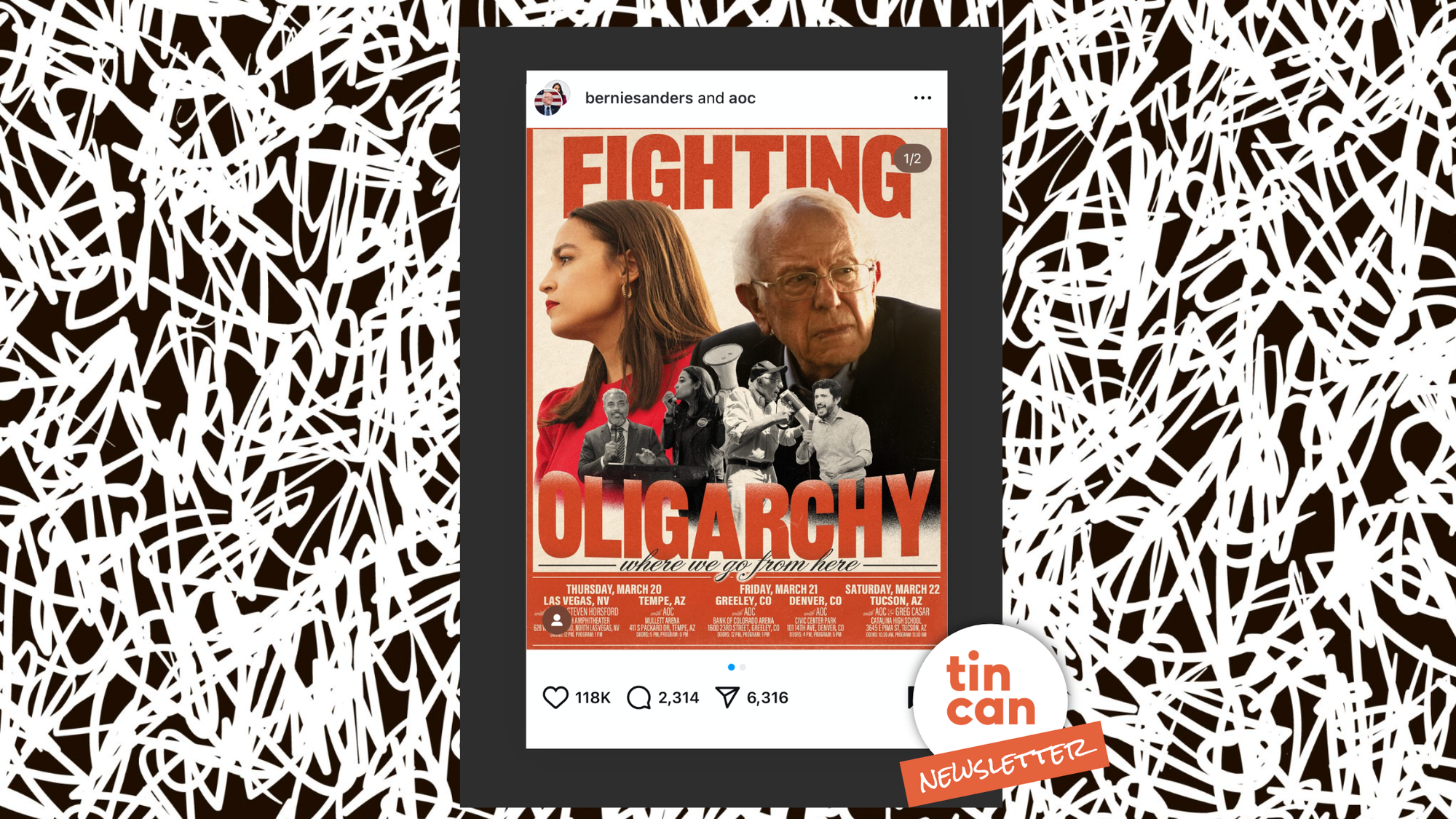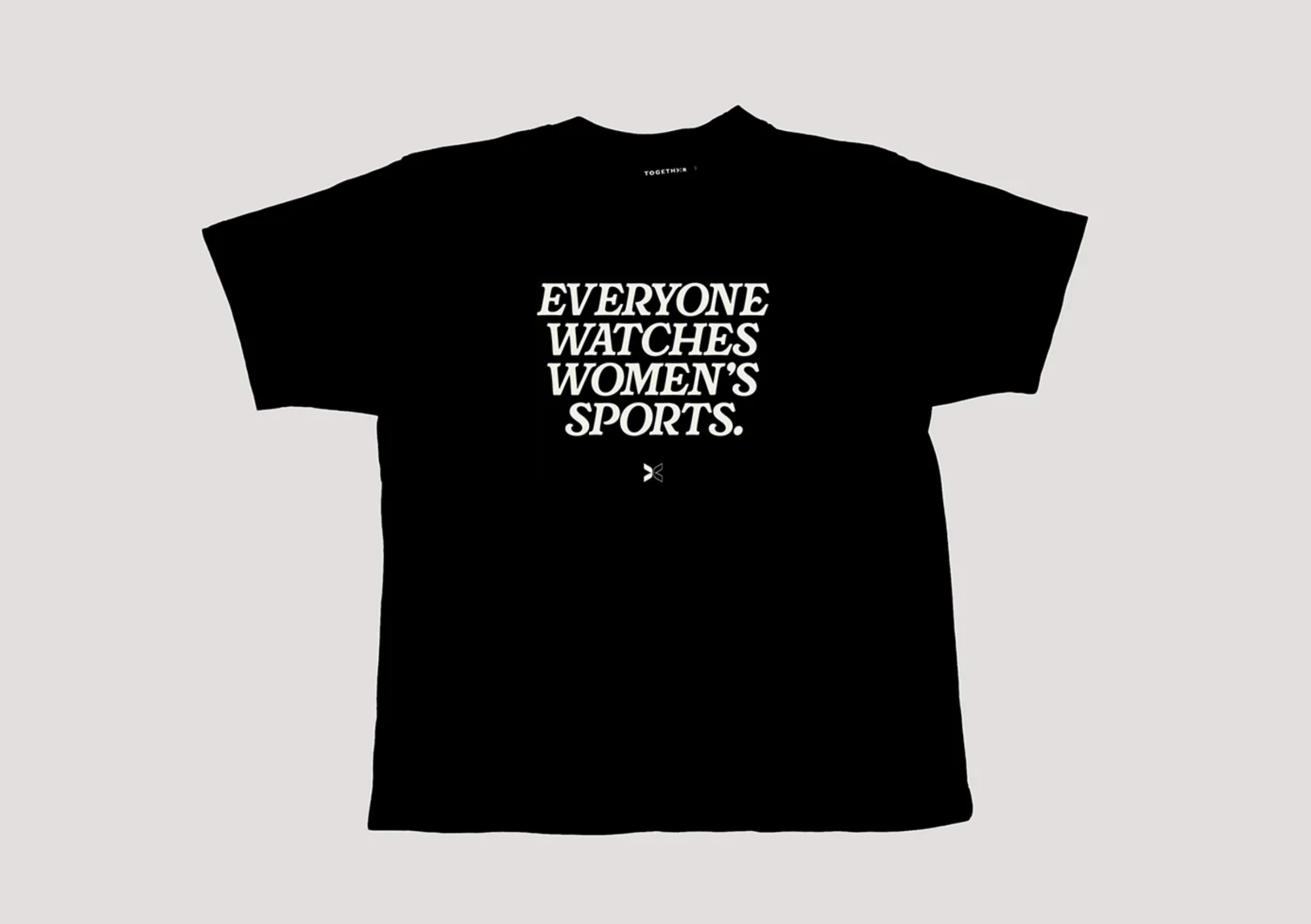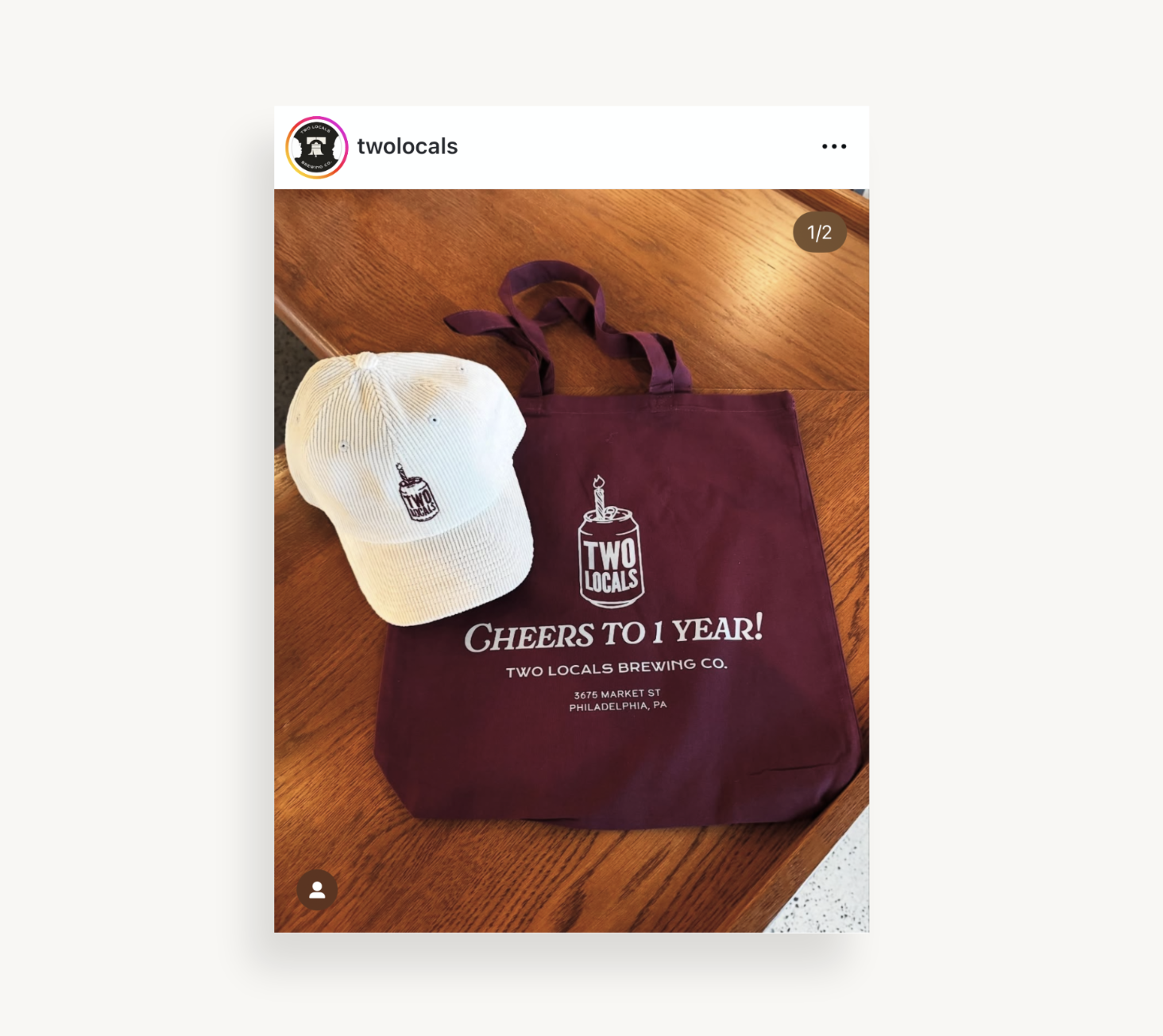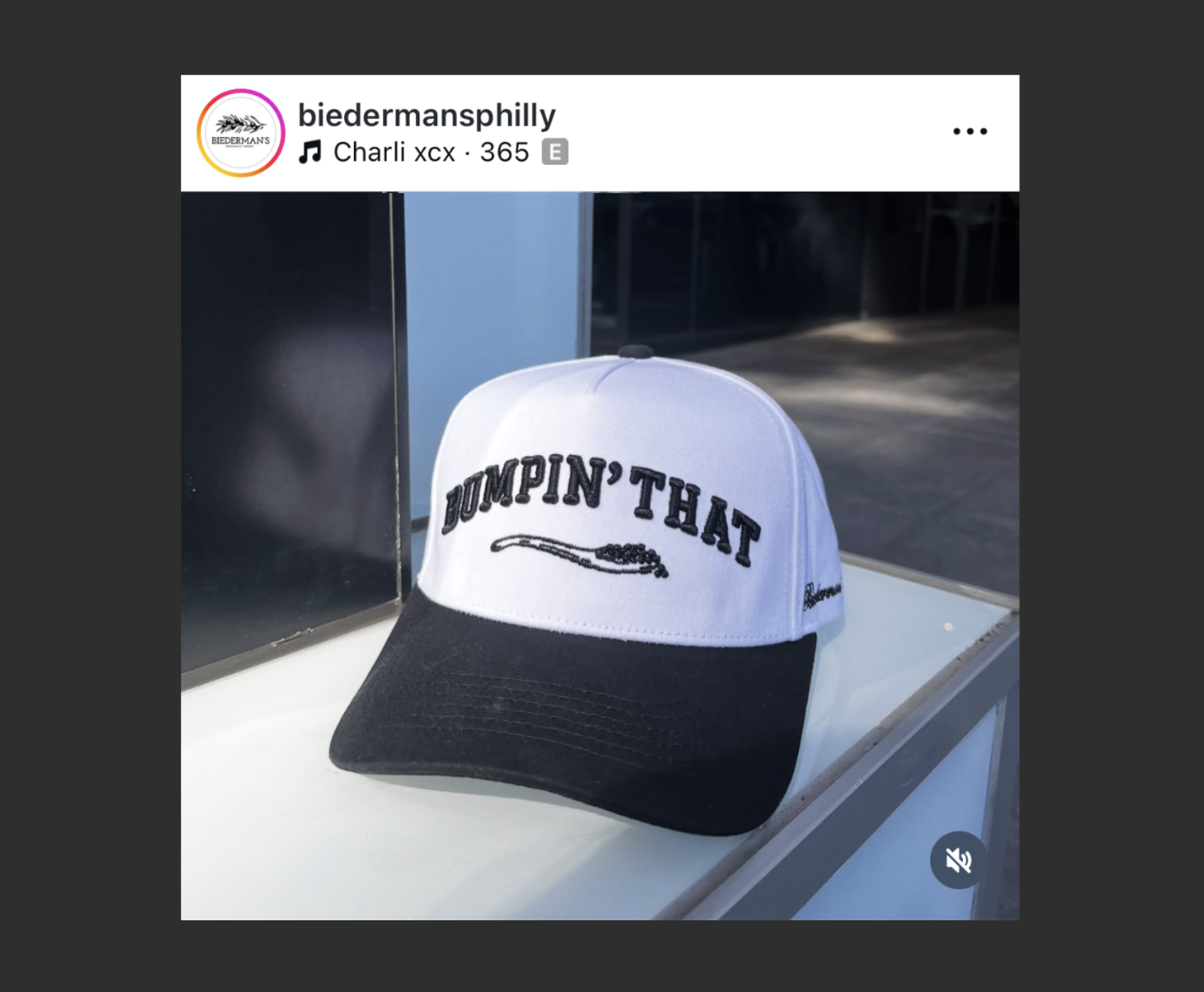It’s Not Just a T-Shirt
An exploration of why we buy, wear, and obsess over merch—plus a Q&A with Biederman’s on their instantly iconic caviar hat.


Merch is complicated. When I see someone who’s clearly not a Yankees fan wearing a Yankees hat, I can’t help but wonder—are they repping the team, or is this just…a look? Which raises the bigger question: why do we buy merch at all?
Sometimes, merch is simple. If it’s a band I love or a team I actually root for, the decision is easy—I buy the t-shirt, the doohickey, the commemorative whatchamacallit. It’s a badge of devotion, a way to broadcast allegiance. In that case, the merch is directly tied to the brand that made it. But then there’s the other kind—the stuff that takes on a life of its own, like the aforementioned non-sports-y Yankees cap, or any of the I ❤️ NY junk. People don’t buy those things to support NYC tourism or Milton Glaser or the Yankees. They’re buying into an idea, an identity. Same with the Everyone Watches Women’s Sports tee that became a full-blown cultural moment last summer. Togethxr made millions on that thing—not because people were dying to support Togethxr, but because they cared about women’s sports. The brand was just the vehicle.

For smaller businesses, though, the brand is the whole point. The name on the shirt isn’t there for decoration or to feed a bigger mission; it’s there to get the word out. The hard part is getting people to care enough to buy it in the first place. A pop star can move hundreds of t-shirts in a night, but for a small local business, selling even a hundred in a year can be a stretch. The barriers are real—production costs, lack of brand recognition, no built-in event where people are primed to buy. When I worked at a Quaker school in Philly, spirit apparel felt like an obvious necessity. The community wanted it. We wanted to make it happen. But actually producing, storing, and selling it? A logistical nightmare. The financial return? Bad. The marketing impact? Impossible to track. Even now, years later, I’m still puzzling over it.
And yet—on field day, when the playground swarmed with kids in matching t-shirts, none of that mattered. There’s no spreadsheet that quantifies the camaraderie of a stadium full of Eagles fans awash in rebooted Kelly green. That’s the paradox of merch: sometimes it’s a strategic marketing move, and sometimes it’s just something great to put into the world. A flex, a token of belonging, a love letter in cotton and ink.

But merch only works if people want to wear it—and that starts with their connection to the brand. A hoodie isn’t just a hoodie; it’s an endorsement. If your audience isn’t already excitedly spreading the word about you, they’re probably not ready to put your brand on their body. And once merch is out in the world, detached from context, it takes on a life of its own. For sports teams, schools, and bands, slapping a name onto a sweatshirt might be enough. But for everyone else, the message needs to come first. Otherwise, why would people wear it? And does it look good enough that they want to wear it? Style matters.
If I could go back in time and add another piece to that Quaker school’s spiritwear lineup, I’d put the focus on their mascot—a river otter named Frankie. He had lore. He had fans. He appeared in foreign locales (in costume!) during summer vacation. A t-shirt illustrating his yearlong adventures would’ve killed at the end-of-year school events. It wouldn’t have just been spirit wear—it would’ve been a story people wanted to wear.
And in the end, that’s what the best merch is: something worth wearing. Something worth sharing.


Q&A with Lauren Biederman:
Biederman’s Specialty Foods
If a piece of merch is great, it can transcend the brand that made it. That’s the power of a well-executed design, a sharp tagline, or just the right balance of humor and cultural relevance. And when it comes to all three, Biederman’s Specialty Foods—a South Philly Jewish appetizer shop—nailed it with their latest drop: a black-and-white hat emblazoned with BUMPIN’ THAT. It’s a wink to both caviar and pop culture, a crossover moment that makes it more than just shop merch—it’s a conversation piece.
I reached out to owner Lauren Biederman to hear how this hat came to be, how she approaches merch as a business owner, and whether she sees it as a marketing move, a brand flex, or something else entirely.
The best merch has that mix of inside joke + broader appeal, and this nails it. How did this idea click for you?
The Bumpin’ That hat was inspired by a combination of the caviar bumps that we offer at the kiosk and a lyric by Charli xcx in the song “365” where she says “bumpin’ that” about a million times (which I love). Our caviar bumps feature our rotating selection of Osetra and white sturgeon caviars either placed on your hand in a dollop, or on a blini with creme fraiche in order for people who come to our caviar stand to try it.
Once you had the idea, how did the production process go? Any unexpected snags?
For the production, I reached out to a local graphic designer, Olivia Smith Design, then sent the images she created to an Etsy embroiderer who changed a few things in order to format it best on our five panel hat. I knew I wanted a black and white hat since most of our merch is the same colorway. The only snag was that sometimes production takes a super long time; in this case, about four weeks (for me that felt like forever).
So much of merch is figuring out who you’re really making it for. Do you think of Biederman’s merch as something just for your regulars, or do you see it playing a bigger role in the brand?
For Biederman’s, I like to create merch mostly for regulars and to use as uniforms for my staff. We have canvas tote bags, insulated tote bags, tiny lunch box coolers for caviar purchases, hoodies, and t-shirts in addition to these new hats. These were the first items I really made for fun, but it’s been awesome seeing how people like the more playful merch…so we may do more in the future!
Keep up with Biederman’s latest creations by following them on Instagram and Facebook.

Last Scraps
- Whoops—I built a client’s website and just realized her contact form was emailing me instead of her. A+ for the concept, F for logistics. Consider this your friendly reminder to check your contact forms—because if no one can reach you, what’s the point of having a website?

Thanks for reading! If you’ve enjoyed this newsletter and know someone who also kinda hates marketing but has to do it anyway, share this issue with them :)

